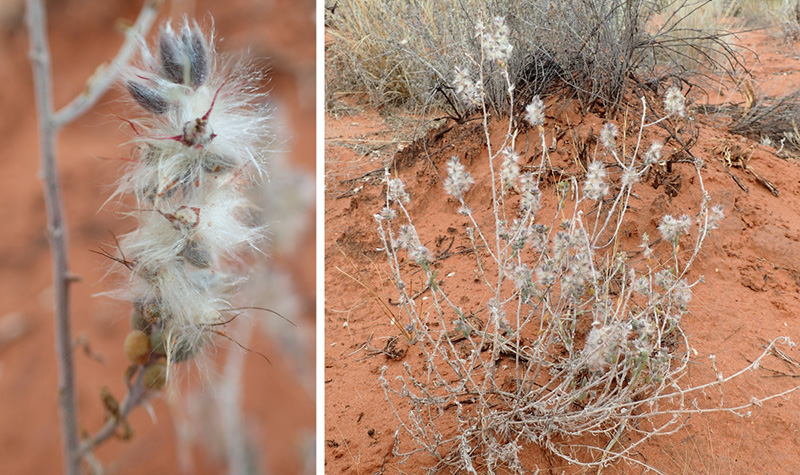
Cardiospermum grandiflorum, a new weed found in Adelaide. Photo: C. Brodie.
The State Herbarium of South Australia documents all known plant taxa (species, sub-species, varieties and forms) native and naturalised (weedy) in South Australia. These taxa are listed in the Census of South Australian Plants, Algae and Fungi. All newly discovered state and regional records are added to the Census throughout the year. The records are based on preserved plant specimens, verified by a botanists, and housed in the vaults of the State Herbarium.
For all new records of non-native plants, an annual report is produced by the Weeds Botanists and colleagues from the State Herbarium. The report includes the list of new weeds recorded for South Australia with locations, descriptions, and photographs. Also documented are updates to other taxa that have had a change in distribution, weed status or name. Other activities carried out by Weeds Botanist are also summarised, such as field trips or presentations to community groups.
The latest report, Regional Landscape Surveillance for New Weed Threats Project, 2016-2017: Annual report on new plant naturalisations in South Australia is now available online (3.8mb PDF).
Previous annual reports from 2010 to 2016 have been combined in to one document and are also available (3.7mb PDF).

Nerine sarniensis, an introduced bulb in Belair National Park. Photo: P. Lang.
These reports highlights to land mangers, which non-native plant species have recently been found in South Australia and where.
New records are listed as either “naturalised/established” (*) or “questionably naturalised/established” (?e).

Chris Brodie collecting a specimen of Eucalyptus woodwardii near Snowtown. Photo: P. Lang.
Naturalised plant taxa are those that have originally been introduced by humans to an area, deliberately or accidentally. They have self-propagated without aid where they are not wanted, possibly spreading by natural means to new areas. An example listed in the recent report is Cardiospermum grandiflorum, commonly known as Balloon Vine. It is a climbing plant that is spreading along a suburban creek line the suburb of Darlington. An attractive bulb species, Nerine sarniensis (Guernsey Lily), has been found naturalising in Belair National Park.
Questionably Naturalised plant taxa (i.e. possible new weeds) are introduced non-native plants that may be self-propagating without aid, but are not well established or lack data to classify them as naturalised. An example of this in the report are a selection of species of Eucalyptus from W.A. and eastern Australia, including E. campaspe, E. spathulata, E. tricarpa, E. urna and E. woodwardii.
A map of State Herbarium botanical regions of South Australia can be found here.
Any unknown or possible new state or regional weed records should be reported to Chris Brodie (08 8222 9468, 0437 825 685, chris.brodie@sa.gov.au).
Contributed by State Herbarium Weeds Botanist Chris Brodie.














You must be logged in to post a comment.